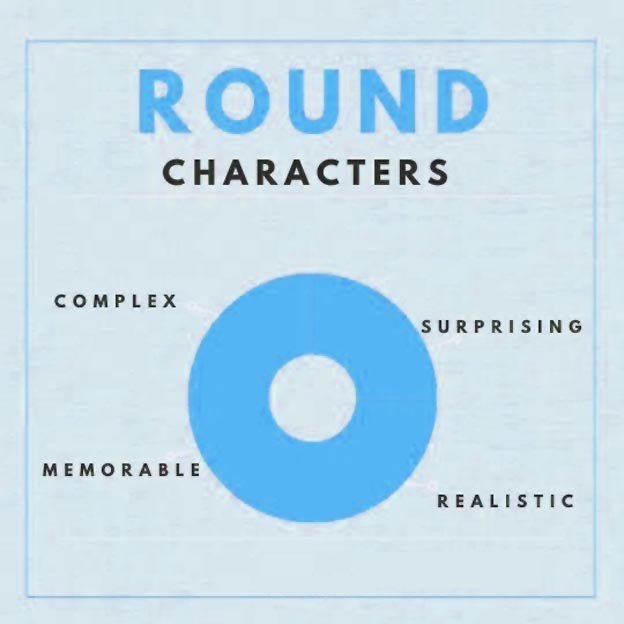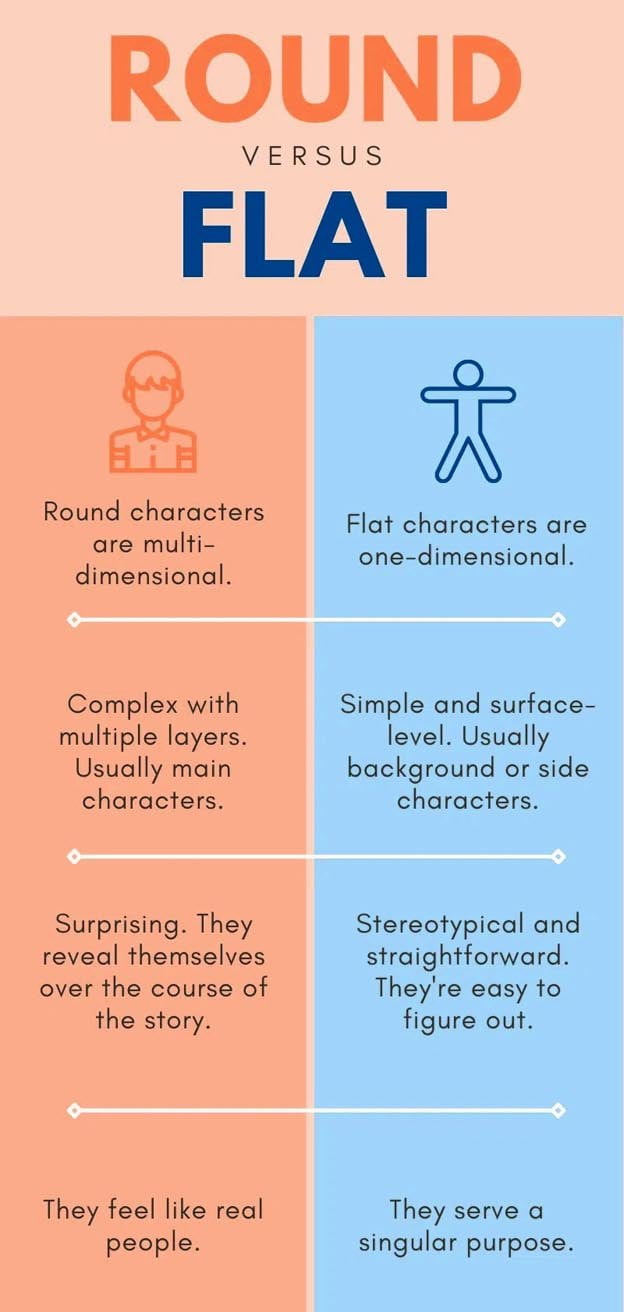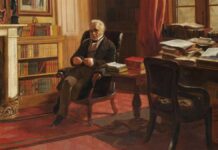Characters are a vital component of any literary work. Characters can be sorted into different types according to their creation and development. Flat and round characters are one such classification. Characters in a novel, short story, play, or film can be either flat or round. Flat characters are two-dimensional in that they are relatively uncomplicated and do not change throughout a work. By contrast, round characters are complex and undergo development, sometimes sufficiently to surprise the reader. Flat characters are more like window-dressing. They are two-dimensional and lack nuance. Their purpose in a story is usually perfunctory. A round character is nuanced and well thought-out. They usually play an important role in the story. They are written specifically so audiences can pay attention to them for a specific reason.
E M Forester came up with the term in his book Aspects of the Novel in 1927 and recognized that both types of characters are necessary. He wrote, “A novel that is at all complex often requires flat people as well as round.” Round and flat characters work well in tandem. It’s a myth that round characters are better and flat characters should be avoided. Together, they create the full cast of a story.
- Round characters are complex, surprising, and feel like real people.
- Flat characters are simple, stereotypical, and serve a singular purpose.
The protagonist and leading cast of characters will usually be round. If a character is a main part of the story, we want them to be interesting. We want them to feel alive, as Forster would say so that the reader can feel interested in them and engage with the story through them. This happens best when a character is complex and layered, surprising and interesting.
Flat characters are usually in the background. They work well as supporting characters, or main characters if a very simple story like a myth or parable is told. They’re simplistic and unsurprising, but this reliability can help to build the foundation of a story. While round characters might be more unpredictable, the flat ones are there to offer some stability.
Flat Characters
A flat character is a two-dimensional character lacking depth or a real personality. Usually, flat characters have just one or two perfunctory traits. Often considered “stock characters,” flat characters can often be summarized in one word like “bully” or “love interest” and never digress from or transcend their role.
- A good story is never made up of mostly flat characters. A good story needs to have a balance of round and flat characters.
- Flat characters still need to serve a specific purpose to propel the story forward in some way.
- Flat characters are often confused with static characters, and while they are related, they are different concepts. Where a flat character is two-dimensional, a static character does not change throughout the story.
- Most flat (uncomplex) characters are static (unchanged by the end of the story), but not all static characters are flat.

Flat means a character is just an “action/trait” without much justification behind it. Flat characters should be easy for an audience to understand quickly. That character is identified as nosy as soon as the main character spots them peeking through their curtains with their binoculars. Immediately, their type is known as well as their whole deal. Flat characters are surface-level and one-dimensional. Forster said that flat characters ought to be “constructed around a single idea or quality.”
If round characters are meant to be surprising, then flat characters should be predictable. Predictability has its place in every story. If a hero is on a chaotic quest, that chaos will be emphasized with the glimpses of the normal world and the people who live in it, the ones who are the opposites of complicated round characters. Sometimes, flat characters are the ones who are met only for a moment, like extras in a film. They make the round or main characters feel more real just by being there and filling the world with an extra life.
Functions for flat characters include expanding the world, advancing the plot, and serving as a foil for the main character. When they’re used consciously and effectively, flat characters make a story shine.
In Romeo and Juliet, Lady Capulet and Lord Montague are flat characters.
- They’re foils to Romeo and Juliet.
- These two characters hold a grudge against one another and their families.
- We don’t know the backstory of their motivation.
Romeo and Juliet are round characters.
- Surprise: they break out of what their families expect of them.
- They are complex—they oppose the simplistic war between their families.
- They have strong internal conflict in the form of star-crossed love.
- Because Lady Capulet and Lord Montague are foils, or opposites, to Romeo and Juliet, their function is to highlight the stakes of Romeo and Juliet’s secret love.
Flat characters usually work best in supporting roles or as background characters in a story about a round character. They also work very well in a very simple story like a fairy tale or myth. As long as they’re well placed in a narrative and/or genre, they’re excellent tools. Forster said that the main problem with flat characters is not that they are flat, but that they “pretend to be round.” Flat characters only weaken the writing and make it seem simplistic and boring if flat characters end up in the wrong part of your story.
Round Characters
A round character is a deep and layered character in a story. Round characters are interesting to audiences because they feel like real people; audiences often feel invested in these characters’ goals, successes, failures, strengths, and weaknesses.
- Round characters are fully realized characters that come into conflict with each other and other characters in believable ways, spurring character development.
- One literary term often confused with “round character” is “dynamic character,” and while they both go hand in hand, they are different concepts. While a round character is a character with a complex personality, a dynamic character changes throughout a story.
- Hence, a character can be both round (interesting) and dynamic (changed).

Round characters have layers. They’re multi-dimensional. They have depth, and they’re complex figures that the reader can get to know throughout a story. This is why they’re often the most memorable characters and why they might stick in a reader’s mind as their favourite. Forster argued that round characters need to be “capable of surprising in a convincing way.” Because they are not predictable, the reader feels curious and gets to learn more about them. Only round characters can surprise because they do something that’s beyond their surface-level personality and actions.
Round characters have more reasons for what they do than flat characters. They take a certain action or have a certain trait because of some fundamental part of who they are, or some event in their past. Backstory and motivation can be helpful to think about when building out a round character. If it is known how a character came to be, this gives a sense of their layers and depth. Like real people, round characters are complicated, and elements of their past can help explain why they do what they do. These bits of background can all contribute to what a character chooses to do and why. And when that reasoning –the why– seeps into the story, that makes a character rounder.
Flat characters can survive with just external conflict. But round characters need internal conflict as well. This conflict is often at the root of what makes a character complicated and interesting. For example, Shakespeare’s Macbeth is power-hungry when he murders the king to steal his crown, but there’s more to it than that.
- He’s trying to live up to expectations—of his wife, his friends, the mysterious witches, and ultimately himself.
- He’s kind of a tortured soul, and these desperate feelings make him compelling to the audience.
He does terrible things because he wants to prove himself. Even though he’s a tragic hero and he goes to some awful lengths to get what he wants, we’re invested in his story and we want to find out how it ends.
Good round characters feel like the Walt Whitman quote, “I contain multitudes.” Multitudes are contradictions. Take a look at Macbeth.
- He’s wealthy, powerful, and accomplished.
- But we discover that he also has a huge capacity for weakness and fear.
- These opposing forces feel real and relatable—perhaps, especially for those of us who have experienced imposter syndrome—and they draw us in. It’s what makes Macbeth feel true to life.
Difference Between Flat and Round
The biggest difference between flat and round characters is the character’s complexity: round characters have layers, while flat characters do not. These layers cause the round characters to be more interesting, meaning audiences can more easily sympathize with round characters than with flat ones.

Definition
- A flat character is an uncomplicated, two-dimensional character who may not be fully delineated by the author.
- A round character is a complex character whose personality, motives and other features are fully delineated by the author.
Complexity
- Flat characters are uncomplicated.
- Round characters are complex.
Change
- Flat characters remain the same throughout the work.
- Round characters undergo change.
Traits
- Flat characters are characterized by one or two traits.
- Round characters are characterized by many different, even contradictory character traits.
Summing Up
- Flat characters can be summed up in one or two sentences.
- Round characters cannot be summed up easily.
Surprise
- Flat characters cannot surprise the readers since they are predictable.
- Round characters can surprise the readers.





























